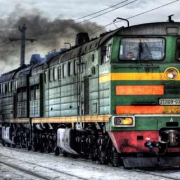The smart grid lie – why the real smart grid will blow your mind
Already in 2008, Smart Grids were all the rage. Everything was to become smart but when I hit my first Smart Grid conference in Paris in 2010, I was disappointed beyond any description.
What I saw there was as smart as a fruit fly – not my definition of real brainy. When I think of smart energy, I have something much more potent lurking deep in the folds of my gray matter.
Today’s so-called smart grid is nothing but some smarts on the measuring side, maybe some predictive models allowing better network controls and utilization. That is nice but not revolutionary. A strong term like SMART GRID would have to respond to a set of challenges which I would enumerate as:
- it needs to be resilient – that means it must heal from any kind of disruption without third-party intervention necessary;
- it needs to produce energy where it is needed – which leads to short transport ways and hence less transport capacity required;
- it needs to provide backup and balancing energy where and when it’s needed – this means a mix of energetic storage and the right kind of energy in the right place;
- it needs to be clean – that should be a no-brainer nowadays;
- it needs to be renewable – any more mental output necessary on that one?;
Please add to this list if I have omitted one of the important issues.
What energy grid am I talking about? Most people reduce the smart grid to electricity when I would rather understand something much more comprehensive. I would certainly include methane distribution and also any other means of producing, transporting, storing, and delivering energy to those who need it.
The integration of it all makes the grid smart, not just metering consumption.
Let us start with the last two points on the list. In 2014, there really shouldn’t be the need for any explanation. Today’s energy grids are woefully inadequate on this count. In electricity, billions are being spent on wind and solar power, and in certain countries, hydropower certainly makes an impact but one may want to disagree on how smart those policies are because they fail on point number 3.
Besides, those installations do nothing to make a grid more resilient and they fail at the rationale to produce energy where it is needed.
With that out of the way, let us take a look at what a truly smart grid could look like.
There are no real smarts without smart generation and I mean that in every sense of the word. When pipelines in Ukraine blow up threatening the gas supply in Europe, we do not generate energy where we need it. The gas is needed here in European cities but we get it from holes in earth far away in Siberia. This makes for awfully long pipelines with correlating costs and supply security risks.
It is easy to imagine just in place and just in time generation when it comes to electricity. How could that be done with the primary energy sources that often serve as combustible fueling the very generating device itself?
The reason we need to integrate some chemical compounds that can be used for generating electricity is twofold.
- firstly, we need something that allows us to store energy for times when we need it and when the fickle wind and sun do not produce anything; and
- secondly, we need to provide something that can be used as a fuel for mobility, especially the heavy transport side is really hard to pull off with electricity alone. Range and refueling are really hard issues.
The compound able to do it all and also clean enough to comply with a post-2000 world is Methane. Who is surprised now? You are on an LNG blog.
No, seriously now. Look at the face of things. There are always those who point at a perfect city on the hill but how many times have you seen those grandiose schemes come true? I have lived long enough to have gone through multiple cycles of – let us do the perfect instead of the better and it never got us anywhere. It can never be perfect as anyone’s threshold for perfection is different. Plus those grandiose dreams are often used as a pretext to do nothing at all.
Above I have laid out what a post-2000, post-September 11, post-Cold War, and Arab Spring and the digital world must necessarily look like – at least energy-wise. Otherwise, there is no improvement from what we have today and that is abysmal not only by my standards.
We are in the state we are in right now because we are lazy. After all, we always had the easy way out. Oil and oil products are nothing very smart. It is, in fact, the smeary stuff, that comes up together with what gives me the shingles – methane. Oil is just so much easier to use than methane so we have gone for this dirty shit rather than going for something much better right away.
The end of cheap oil is the end of easy oil and now things get different. There still is an awful lot of dumb old infrastructure in place and this is the reason why oil can stage such a ferocious defense battle but this “let’s pull stuff out of the earth at one place of the globe and transport it to another one where it’s going to be consumed” concept was a bad idea in the first place. This is the way we have built the world and we must suffer the consequences.
A truly smart energy grid (and I mean energy in every sense of the word from mobility to light, heat, and mechanical labor) would produce primary energy right where it is needed and it would provide backup and storage and balancing and security of consumption.
And most important – it would be so normal that you would completely forget about it.


















Schön g`sagt.
Aber was hört man von der Speicherung momentan überschüssiger (el.) Energie in Methan?
Da ist momentan viel unterwegs und ich werde auch noch einige Artikel dazu schreiben aber ich verdiene mein Geld nicht mit schreiben und daher ist meine Zeit begrenzt. Aber Sie haben schon Recht, da kommt nich einiges auf uns zu.